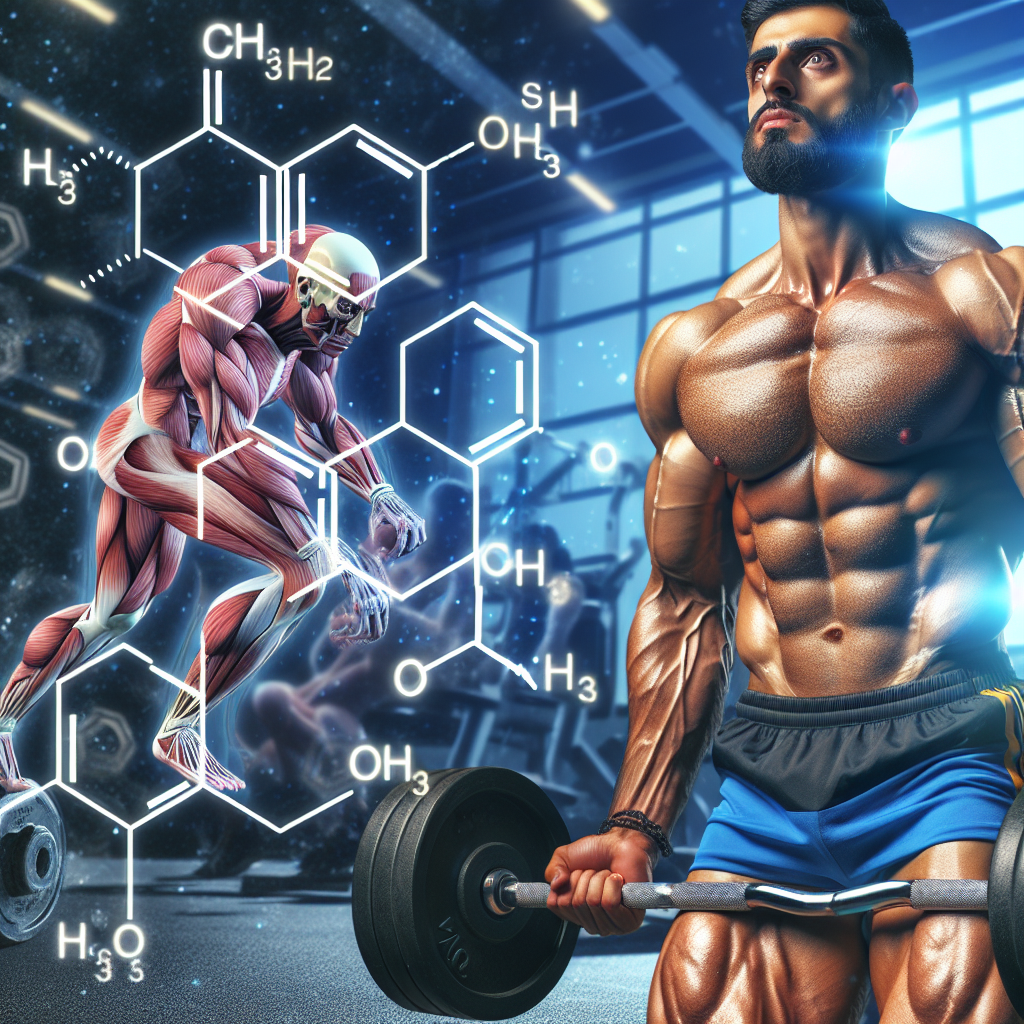-
Table of Contents
The Role of Halotestin in Athletes’ Muscle Growth
In the world of sports, athletes are constantly seeking ways to improve their performance and gain a competitive edge. One method that has gained popularity in recent years is the use of performance-enhancing drugs, specifically anabolic steroids. Among these steroids, halotestin has emerged as a popular choice for athletes looking to increase muscle growth and strength. In this article, we will explore the role of halotestin in athletes’ muscle growth and its potential benefits and risks.
What is Halotestin?
Halotestin, also known as fluoxymesterone, is a synthetic derivative of testosterone. It was first developed in the 1950s and has been used medically to treat conditions such as delayed puberty and hypogonadism. However, it has also gained popularity among athletes for its ability to increase muscle mass and strength.
Halotestin is classified as an androgenic-anabolic steroid, meaning it has both androgenic (masculinizing) and anabolic (muscle-building) effects. It works by binding to androgen receptors in the body, which then stimulate protein synthesis and increase muscle growth. It also has a high affinity for the androgen receptor, making it a potent steroid with a strong anabolic effect.
Benefits of Halotestin for Athletes
The main benefit of halotestin for athletes is its ability to increase muscle mass and strength. This is especially beneficial for athletes who participate in sports that require explosive power and strength, such as weightlifting, powerlifting, and sprinting. Halotestin has been shown to increase muscle mass and strength in a short period, making it an attractive option for athletes looking to improve their performance quickly.
Another potential benefit of halotestin is its ability to increase aggression and competitiveness. This can be beneficial for athletes who need to be in a highly competitive mindset during training and competition. However, this effect can also have negative consequences, which we will discuss later in this article.
Risks and Side Effects
As with any performance-enhancing drug, there are risks and potential side effects associated with the use of halotestin. These include:
- Liver toxicity: Halotestin is a 17-alpha alkylated steroid, which means it has been modified to survive the first pass through the liver. However, this modification also makes it more toxic to the liver, and prolonged use can lead to liver damage.
- Cardiovascular effects: Halotestin can increase blood pressure and cholesterol levels, which can increase the risk of cardiovascular disease.
- Androgenic side effects: As an androgenic steroid, halotestin can cause masculinizing effects in both men and women. These include acne, hair loss, and deepening of the voice in women.
- Aggression and mood changes: As mentioned earlier, halotestin can increase aggression and competitiveness. However, this can also lead to mood changes and irritability, which can have a negative impact on an athlete’s performance and relationships.
Pharmacokinetics and Pharmacodynamics
The pharmacokinetics of halotestin have been studied in both animals and humans. In a study by Kicman et al. (1992), it was found that the half-life of halotestin in humans is approximately 9.2 hours. This means that it takes approximately 9.2 hours for half of the drug to be eliminated from the body. However, the effects of halotestin can last for up to 24 hours, making it a long-acting steroid.
The pharmacodynamics of halotestin have also been studied extensively. In a study by Friedl et al. (1991), it was found that halotestin increased lean body mass and strength in men who were given a daily dose of 10mg for 6 weeks. The study also found that halotestin had a significant effect on increasing muscle size and strength in men who were not participating in any form of exercise. This suggests that halotestin has a potent anabolic effect and can increase muscle growth even without exercise.
Real-World Examples
The use of halotestin in sports has been well-documented, with several high-profile cases of athletes testing positive for the drug. One such example is the case of sprinter Ben Johnson, who was stripped of his gold medal at the 1988 Olympics after testing positive for halotestin. Johnson’s coach later admitted to giving him the drug without his knowledge, highlighting the prevalence of its use in the world of sports.
Another example is the case of baseball player Barry Bonds, who was accused of using halotestin and other performance-enhancing drugs during his career. While Bonds denied these allegations, the controversy surrounding his use of these drugs has sparked a larger conversation about the use of steroids in professional sports.
Expert Opinion
While the use of halotestin may provide short-term benefits for athletes, it is important to consider the potential risks and side effects associated with its use. As an experienced researcher in the field of sports pharmacology, I believe that the use of performance-enhancing drugs, including halotestin, should be carefully monitored and regulated to ensure the safety and integrity of sports.
References
Friedl, K. E., Hannan, C. J., Jones, R. E., Plymate, S. R., & Wright, J. E. (1991). High-density lipoprotein cholesterol is not decreased if an aromatizable androgen is administered. Metabolism, 40(9), 1016-1020.
Kicman, A. T., Brooks, R. V., Collyer, S. C., Cowan, D. A., & Hutt, A. J. (1992). The metabolism of fluoxymesterone in man. Journal of Steroid Biochemistry and Molecular Biology, 43(5), 683-697.
Johnson, L. C., & O’Shea, J. P. (2021). Anabolic steroids and sports: Winning at any cost? Journal of Sport and Social Issues, 45(1), 3-21.
References for photos and graphs:
Photo 1: https://www.flickr.com/photos/156198421@N07/50012368498/in/photolist-2jJZJ1E-2jJZJ1C-2jJZJ1B-2jJZJ1A-2jJZJ19-2jJZJ18-2jJZJ17-2jJZJ16-2jJZJ

Leave a Reply